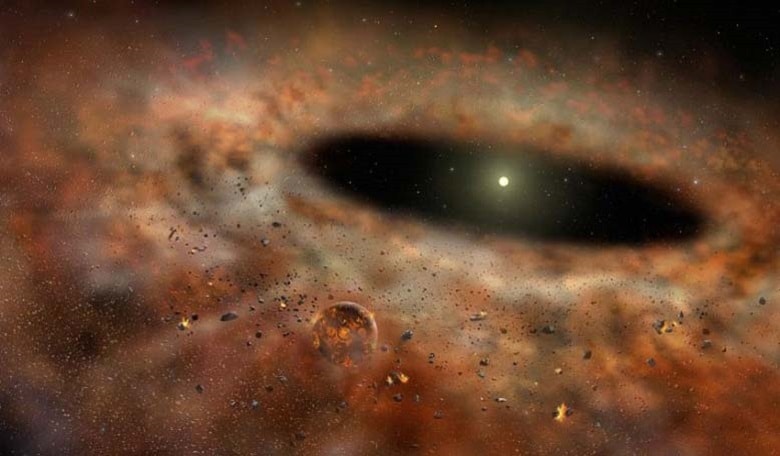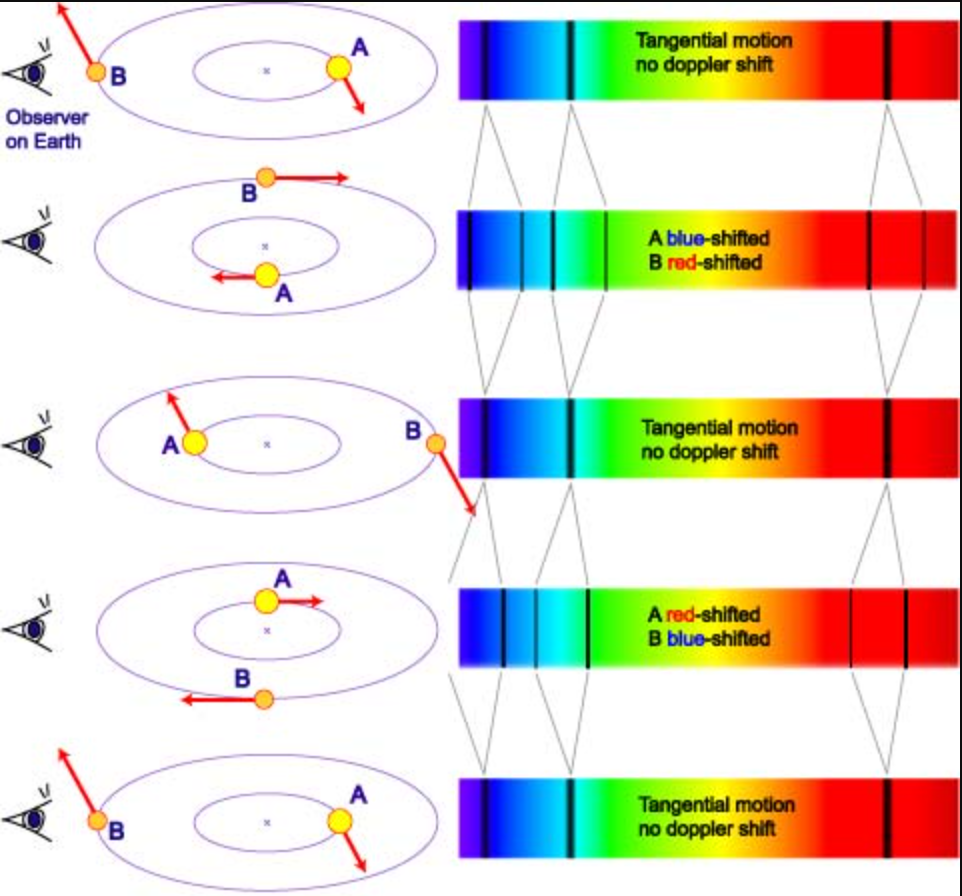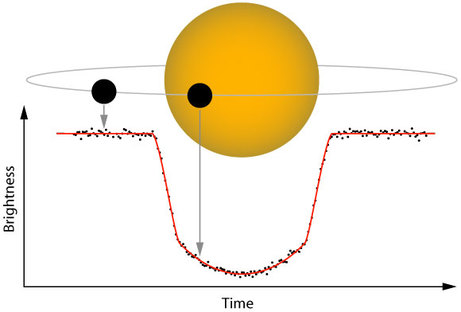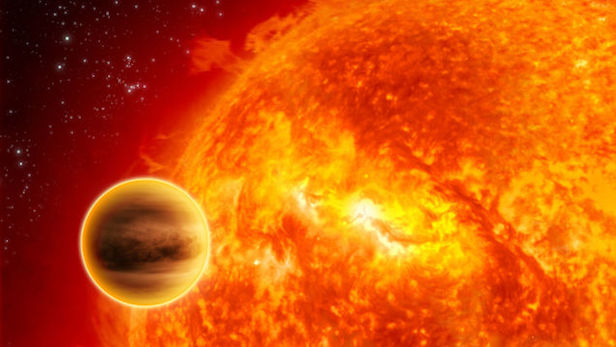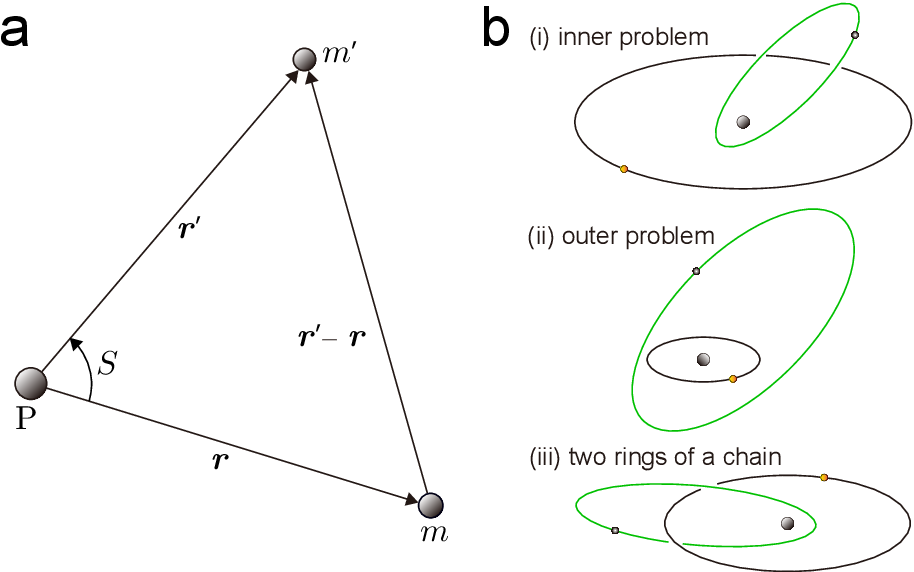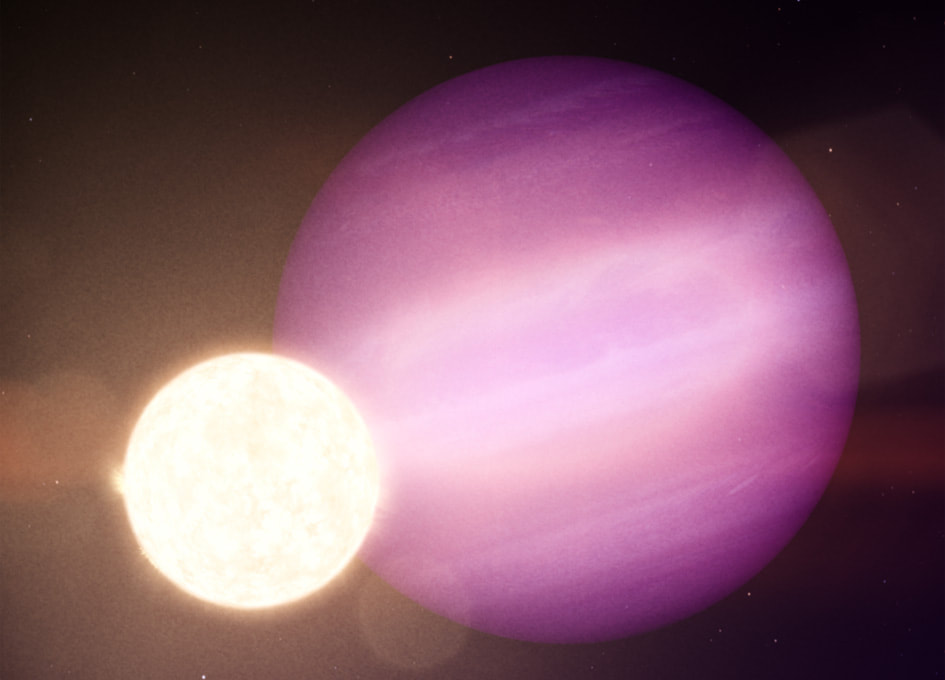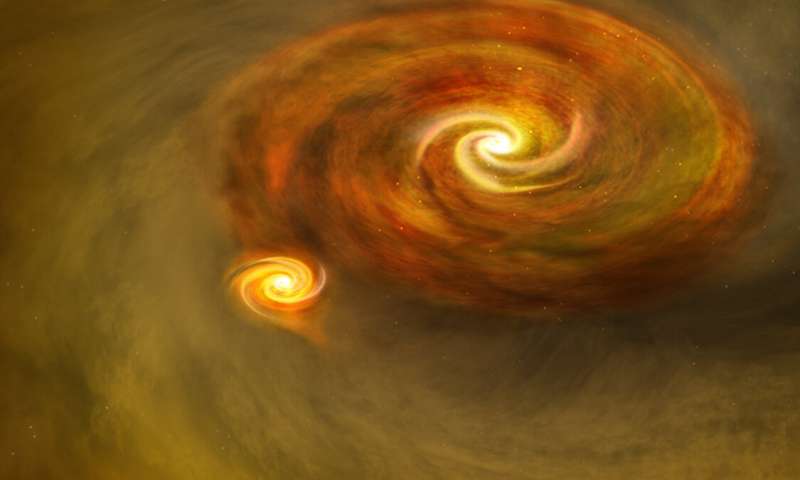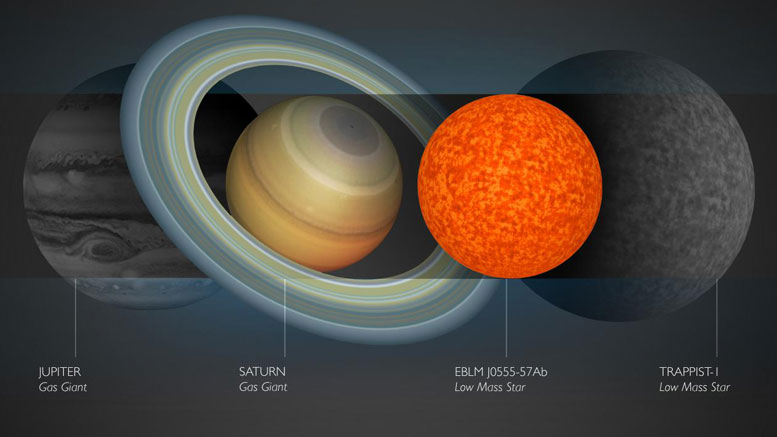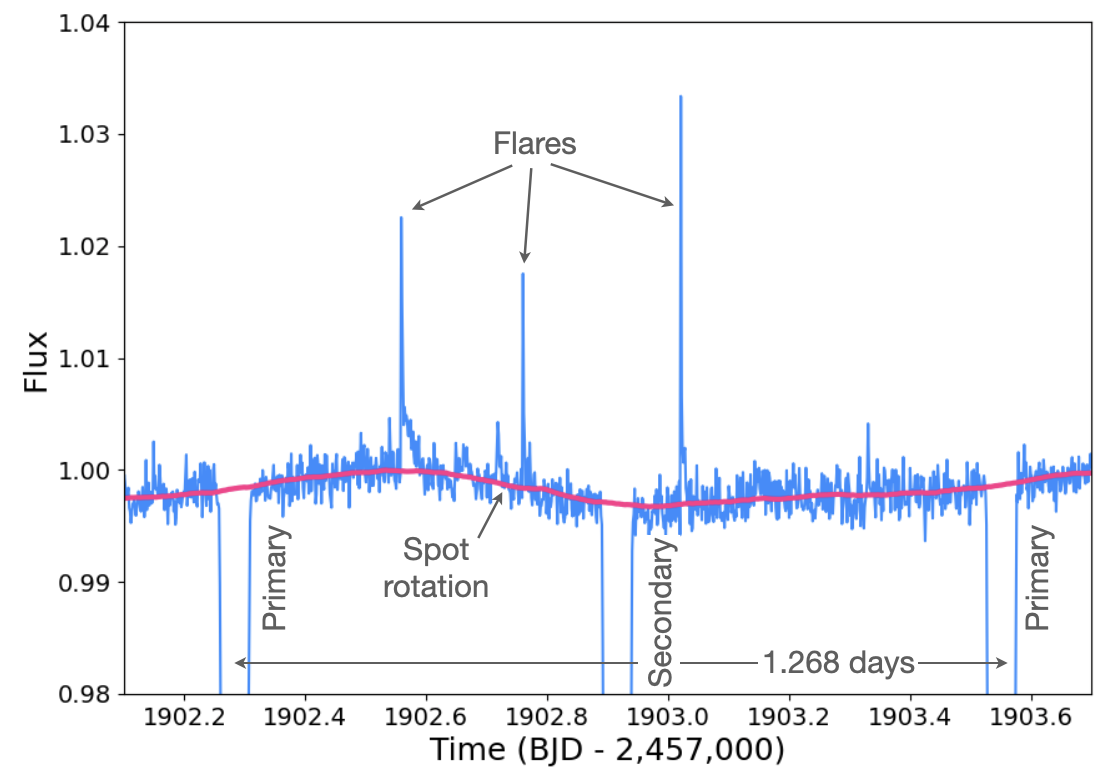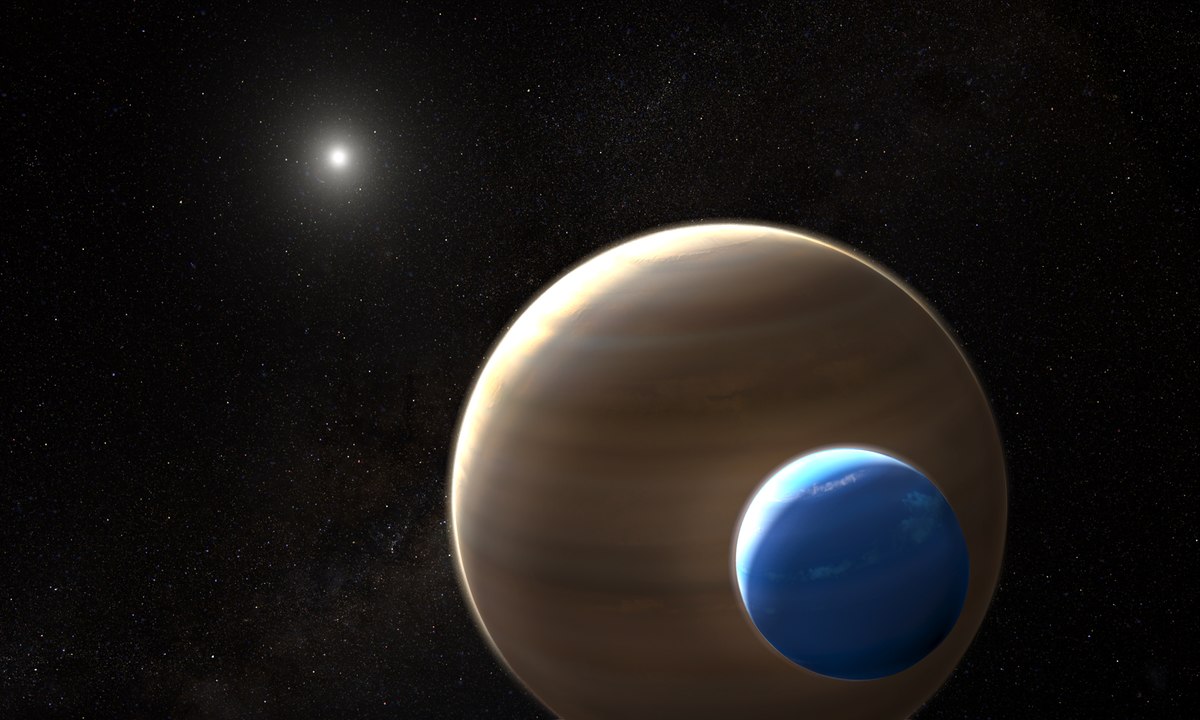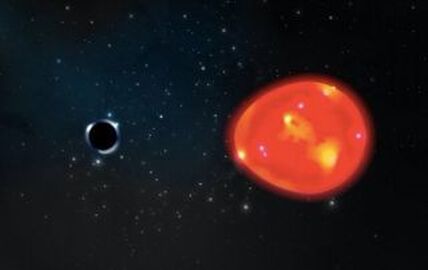Planet formation & evolutionI'm fascinated by how populations of stars, binaries and exoplanets give context of how these planets formed and evolved. We now have thousands of exoplanet discoveries, but some fundamental questions remain over how (and where) they formed, and the processes that governed their evolution (e.g. disc-driven migration, scattering and Kozai-Lidov cycles). A lot of my observing programs have been created to find planets which challenge theories of formation. I have then written theoretical papers to interpret these results, e.g. tight binary formation, Kozai-Lidov cycles and circumbinary migration (papers 1 and 2)
|
Circumbinary planetsCircumbinary planets, and indeed planets in binaries in general, may appear on the surface as a cute exotic example of nature's diversity. I look at them differently. We didn't even think that circumbinary planets could exist, owing to a turbulent environment around the binaries. This means that already you have a beautiful example of the robustness of planet formation. Since their first unambiguous discovery in 2011 with Kepler-16b, we now have a small but informative sample of over a dozen planets. I am working on efforts to expand beyond these Kepler discoveries, such as with TESS photometry, BEBOP radial velocities and eclipse timing variations. The planets are harder to find than planets around single stars, which presents a cool challenge to develop new techniques. I have over a dozen papers on the topic and wrote a review on the topic in the Handbook of Exoplanets. My most recent work includes the STANLEY algorithm that is sensitive to Earth-sized circumbinary planets, and the first ever discovery of circumbinary planets in radial velocity (BEBOP-1) and eclipse timing variation (Kepler-1660, paper coming shortly).
|
Precision radial velocitiesI was incredibly fortunate to do my PhD at the University of Geneva, one of the powers of radial velocity spectroscopy, including the first sun-like star exoplanet 51 Peg discovery back when I was 5 years old! Historically, a big challenge for precision radial velocities has been when there is a binary star system. There will typically be two sets of spectral lines. To find a planet orbiting one or both of the stars, we have to disentangle the two sets of spectral lines. This is particularly challenging for a tight binary, as those lines will be moving during the star's orbit. With Amaury Triaud, Stéphane Udry and collaborators we created the BEBOP radial velocity survey for circumbinary planets. To solve the fundamental problem of a complicated double spectrum we carefully created a target list of unequal mass binaries. We basically can't even see the second star! Our results have been published using the CORALIE, SOPHIE, HARPS and ESPRESSO spectrographs! We show we can achieve a precision comparable to single stars of the same brightness. Ultimately, if we are to find true Earth analogues, as prioritised by the recent Astro2020 Decadal Survey, we will need to use precision (indeed, extreme precision) radial velocities!
|
Planetary transitsMany surveys, e.g. Kepler from space and WASP from the ground monitor the brightness of thousands of stars. When a planet passes in front of its host star(s), known as a transit, the brightness drops and we obtain information about the planet. The separation of transits tells us the planet's period. The width and depth of the transit indicate the radius of the planet. If we also know the planet's mass, e.g. from radial velocity spectroscopy or transit timing variations, then we know the planet's bulk density and can start to probe its interior composition. Furthermore, when a planet transits its atmosphere (if it has one) will only block out part of the starlight. Based on the different wavelengths absorbed we can identify different elements and molecules within the atmosphere. In the future we may ultimately find biological markers indicative of life. I've used this method to find several planets, e.g. TOI-1259, TOI-1338, TIC 172900988 and hundreds of eclipsing binaries, e.g. HERE
|
Hot-JupitersHot Jupiters are a peculiar type of planet that is a gas giant, so comparable in size and mass to Jupiter, yet orbiting in a close, "hot" orbit around its star. It may be so close that its orbital period is less than one Earth day! The first exoplanet found around a main sequence star, 51 Peg, was a hot Jupiter. Ever since then their existence and formation has puzzled astronomers. I have approached this problem as a comparison to close binary formation. By seeing the similarities and differences we may better understand both types of astrophysical system. This is one of the main goals of the EBLM survey for low mass eclipsing binaries, which spans 8+ papers
|
Orbital dynamicsFor centuries people have worked to understand how gravitationally interacting bodies behave. It turns out that the general three body problem is non-integrable, which is to say that one cannot write a simple equation that will predict the positions of all three body at a future time based on their interactions. This means that there is an entire field dedicated to solving these equations using approximations and numerical methods, and also trying to understand the sometimes surprising behaviour of these gravitational interactions. Circumbinary planets mentioned above, which constitute a three-body system (2 stars, 1 planet), are a perfect example of the intersection between observational astronomy and orbital dynamics. Some of my research has been to show how circumbinary dynamics affect their observability: Paper 1, Paper 2, Paper 3. I also determined some new features of the famous Kozai-Lidov mechanism in Martin & Triaud (2016) and am working on an extension with applications to double degenerate Type-1a supernovae and supermassive black holes.
|
White dwarf planetsSearches for exoplanets have typically focused on single, main sequence stars. There are two main reasons for this. First, these are the easiest stars to target since binary stars can make detections harder (a large chunk of my research) and both young and evolved stars also have observational challenges. A second reason is that our own Sun is a single, main sequence star, and so it's natural to seek comparisons. I've tried to break this mould by looking at planets in binaries that contain a white dwarf, which is a degenerate remnant of a roughly Sun-like star after its full lifetime of stellar evolution. Our first discovery was TOI-1259! To have tight planets around white dwarfs, like those you might be able to see transit, it's argued that a binary is needed to get it there via Kozai-Lidov interactions. A cool thing is that a white dwarf is only about the radius of Earth, and so planets we find transiting it would often be larger (but less massive) than the star! White dwarfs also provide a unique means of dating systems, by looking at white dwarf cooling times, like we did here. Heavy element pollution in white dwarf atmospheres also provides insight into the building blocks of planets. Finally, we have the opportunity to do JWST transmission spectroscopy to probe the atmosphere of the transiting planet, so we could potentially constrain its atmosphere and composition!
|
Close binary formationStars are believed to form out of condensing clouds of gas and dust. Sometimes these clouds fragment into two, three or even more stars. This picture helps us understand the wide diversity of multi-star systems in the Galaxy. However, it is believed that two stars will not naturally form very close together. They alternatively are thought to initially form far apart and then migrate closer. I have been tackling this problem from the perspective of circumbinary planets, and how this new observable helps constrain our theories. I have also helped coordinate observational surveys of low mass binaries, obtaining observational markers of their formation history (eccentricities, orbital obliquities, rotation rates, mass ratios etc).
|
M-dwarf characterisationLow-mass stars only a few 10th of the mass of The Sun, known as M-dwarfs, are fascinating for several reasons. They are young and active, yet also prime targets for exoplanet surveys of potentially "habitable" planets. Both stellar and exoplanet astronomers seek a better understanding of these M-dwarfs, but their diminutive size has made this historically challenging. I have helped lead the EBLM (Eclipsing Binary Low Mass) survey to provide well-characterised M-dwarfs in tight eclipsing binaries. This includes the Saturn-radius star EBLM J0555-57 (pictured left).
|
Extra-solar flaresM-dwarfs are one of the hottest targets in exoplanet searches at present, but we cannot neglect the fact that these low-mass, relatively young stars are highly active. This culminates in significant flares, which can been seen as sharp rises followed by exponential decays in light curves. If we want to find more M-dwarf exoplanets and have a hope of understanding their habitability, we need to understand stellar flares better. To do that I'm using eclipsing binaries such as CM Draconis to give a unique insight into the flares, including geometric constraints on the flare region's size by resolving the flares during occultation by the binary star (Martin et al.). We also measure its stellar radius better than any star ever before.
|
Extra-solar moonsWe know how 100's of moons in the solar system, but for "exomoons" their tiny size challenges observations. In addition to what we expect to be shallow transits, the transit signature is highly variable due to the orbital motion of the moon around the planet. This actually has some similarities to circumbinary planets. I first showed this here, and later applied it to Kepler-1625, which is one of only two exomoon candidates.
|
Black holes in binariesMost stellar mass (i.e. not supermassive) black holes have been discovered in interacting X-ray systems. However, it is predicted that the majority will exist in non-interacting binaries. By combining large photometric surveys (e.g. ASAS-SN and TESS) and spectroscopic surveys (e.g. APOGEE) we can detect such systems. The archetype is a giant star which is undergoing ellipsoidal variation due to a tidal tug from an "invisible" black hole. The first such discovery was Thompson et al. (2018), and I joined this team later and assisted with finding "The Unicorn" in Jayasinghe et al. (2021), which is both the smallest and closest black hole known so far. We have since gone on to find "The Giraffe" in Jayasinghe et al. (2022), and have future candidates on the way based on the CHIRON spectrograph. However, some question marks have been raised with possible false positives (El-Badry et al. 2022) Working with Alexander Stephan and undergrad Andy Miller we are trying to simulate populations of such black holes, including predictions for the false positive rates (under review at MNRAS)
|
